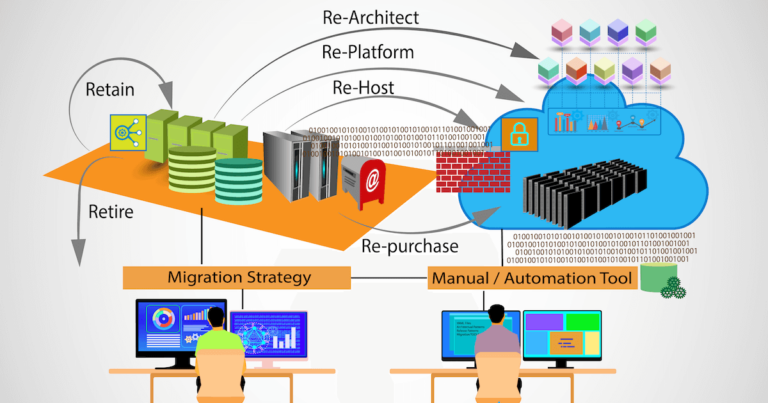In today’s digital age, businesses must adapt and evolve to stay ahead of the competition. One way to do this is by migrating to the cloud. However, moving to the cloud requires careful planning and execution to ensure a smooth transition. This is where a cloud migration strategy comes in. In this article, we will explore what a cloud migration strategy is, why it is important, and the steps involved in creating one.
What is Cloud Migration?
Cloud migration refers to the process of moving data, applications, and other business elements from on-premise servers to cloud infrastructure. Cloud computing allows businesses to store, process, and access data over the internet, eliminating the need for on-premise hardware and infrastructure.
Cloud migration can take different forms, including:
Lift and shift: This involves moving applications and data to the cloud without making any significant changes to the underlying architecture.
Re-platforming: This involves making some modifications to the applications before moving them to the cloud.
Refactoring: This involves rearchitecting the applications to take advantage of cloud-native services.
What is a Cloud Migration Strategy?
A cloud migration strategy is a plan that outlines the steps and processes involved in moving applications and data to the cloud. It involves identifying the applications and data that need to be migrated, selecting the appropriate cloud infrastructure, and determining the migration approach.
A cloud migration strategy also takes into consideration the risks and challenges associated with the migration process, such as data security, downtime, and compatibility issues.
Why is a Cloud Migration Strategy Important?
A cloud migration strategy is essential for a successful migration to the cloud. It helps businesses minimize risks and avoid costly mistakes that could lead to downtime, data loss, and other issues.
A cloud migration strategy provides a clear roadmap for the migration process, ensuring that all stakeholders are aligned and aware of the steps involved. It also helps businesses prioritize the applications and data that need to be migrated first, minimizing disruption to operations.
Steps Involved in Creating a Cloud Migration Strategy
Creating a cloud migration strategy involves several steps, including:
1. Identify the Applications and Data to be Migrated
The first step in creating a cloud migration strategy is to identify the applications and data that need to be migrated. This involves assessing the current IT infrastructure and determining which applications and data are critical to business operations.
2. Select the Appropriate Cloud Infrastructure
Once the applications and data have been identified, the next step is to select the appropriate cloud infrastructure. This involves evaluating different cloud providers and their services to determine which one best meets the needs of the business.
3. Determine the Migration Approach
The next step is to determine the migration approach. This involves deciding whether to use a lift and shift, re-platforming, or refactoring approach. The approach selected will depend on the complexity of the applications and the desired outcome.
4. Develop a Migration Plan
Once the migration approach has been determined, the next step is to develop a migration plan. This involves defining the timelines, milestones, and resources required for the migration.
5. Test the Migration Plan
Before executing the migration plan, it is important to test it thoroughly. This involves conducting a pilot migration to identify any issues or challenges that may arise during the actual migration.
6. Execute the Migration Plan
Once the migration plan has been tested and refined, it is time to execute it. This involves migrating the applications and data to the cloud, monitoring the process closely, and resolving any issues that may arise.
Conclusion
A cloud migration strategy is essential for a successful migration to the cloud. It helps businesses minimize risks and avoid costly mistakes, ensuring a smooth transition. By following the steps outlined in this article, businesses can create
James Martin is a passionate writer and the founder of OnTimeMagazines & EastLifePro. He loves to write principally about technology trends. He loves to share his opinion on what’s happening in tech around the world.


